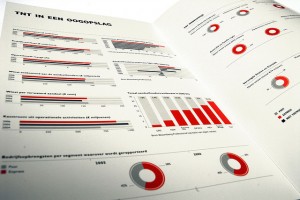Just from reading that title, many of you are likely already experiencing a host of emotions concerning the topic of sexism. It’s one of those topics that lights more than the usual number of metaphorical fires under people’s metaphorical asses, as well it should: it’s one of the labels tethered to people’s value as associates in the social world. Being branded a sexist is bad for business, socially, professionally, and otherwise. Conversely, being able to label others as sexist can be helpful for achieving your social goals (as others might acquiesce to your demands to avoid the label), whereas being thought of as someone who throws around the label inappropriately can lead to condemnation of its own. Because there is so much on the line socially when it comes to sexism, the topic tends to be one that migrates away from the realm of truth to the realm of persuasion; a place where truth might or might not be present, but is besides the point anyway. It also yields some truly strange papers with some even stranger claims. 
“I’d like to introduce you to my co-authors…”
Some of these strange claims – such as the Ambivalent Sexism Inventory’s (ASI) interpretations of sexism – I’ve written about before. Specifically, I found it to be a rather odd scale for assessing sexism; perhaps being more suited for assessing whether someone is likely to identify as a feminist (which, to head off any comments to the contrary, is not the same thing). For instance, one question on the ASI concerns whether “most women interpret innocent remarks or acts as being sexist”, which is a nice way of building into your scale a way of denigrating people who think the scale misinterprets certain remarks or acts as indicating sexism. While it’s open to interpretation whether the scale measures what it claims to measure, it’s also an open question as to how well the answers to the inventory relate to actual sexist behaviors. Luckily, the study I wanted to discuss today sought to examine just that very thing, which is a happy little coincidence. Unfortunately, just as the interpretation of sexist attitudes is open to interpretation, the paper’s interpretation of sexist behavior is also rather open to interpretation, as I will soon discuss. Also unfortunately, the study sought to develop an implicit association task (IAT) to measure these sexism scores as well, and my thoughts on IATs have historically been less than positive.
The paper in question (de Oliveira Laux, Ksenofontov, & Becker, 2015) begins with a discussion of two types of sexism (against women) assessed by the ASI: benevolent and hostile sexism. The former refers to attitudes which hold women in high regard and to the prospect that men ought to behave altruistically towards them; the latter type of sexism refers largely to attitudes concerning whether women seek social advantages by overstating complaints and making unreasonable demands. At least that’s my interpretation of what the inventory is measuring when looking at the questions it asks; if you asked the authors of the current paper, they would tell you that hostile sexism inventory is measuring “antipathy towards non-traditional women who are perceived as challenging male power and as posing a threat for men” and that benevolent sexism measures “subjectively positive but patronizing view of women who conform to traditional roles“. These definitions will be important later, so keep them in mind.
In either case, the researchers wondered whether people’s explicit responses to these questions might be hiding their true levels of sexism, as hostile sexism is socially condemned. Accordingly, their first goal was to try and create an IAT that measured implicit hostile and benevolent sexism. They sought to develop this implicit measure despite their (surely a priori) expectation that it would be less predictive of sexist behavior than the explicit measures, which is one of those stranger aspects of this research I mentioned before: they were seeking to create an implicit measure that does worse at predicting behavior than existing, explicit ones. Undeterred by that expectation, the researchers recruited 126 males to take their sexism IATs and fill out the ASI. The benevolent sexism IAT portion had participants view 10 comics in which the man or woman was taking the active role. More precisely, a man/woman was either: (1) protecting the other with a gun, (2) proposing, (3) carrying their spouse through a door, post-marriage, (4) protecting the other with what looks like a stick, and (5) putting a coat on the other. The hostile sexism portion had words – not pictures – referring to “traditional” women (housewife/mother) or “non-traditional” women (feminist/women’s rights activists). Participants were supposed to sort these pictures/words into pleasant and unpleasant categories, I think; the section concerning the methods is less than specific about what the instructions behind the task were.
“Precise reporting is a tool of patriarchy”
Now the study already has a problem here in that it’s unclear what precisely participants are responding too when they see the pictures in the benevolent IAT: might they find the active women or the man cowering behind her the unpleasant part of the picture they’re categorizing? That concern aside, there were indeed correlations between the IATs and their explicit counterpart measures on the ASI: those who were higher in benevolent sexism were quicker to pair women in the protector role with negative words, and those higher in hostile sexism were quicker to pair feminism with negative words. Sure; both of these correlations were about r = .2, but they were not statistically zero. Further, the IAT measures of benevolent and hostile sexism did not correlate with each other (r = -.12), even though the explicit measures on the ASI did (r = .54). Naturally, the authors interpreted this as providing “strong support” for the validity of these IAT measures.
As a quick aside, I find this method a bit peculiar. The authors believe that hostile sexism might be consciously suppressed, meaning that the explicit measures of it might not be particularly good at measuring people’s actual attitudes. However, they’re trying to validate their implicit measures by correlating them with the explicit ones which they just suggested might not be accurate reflections of attitudes. That makes things rather difficult to interpret if you want to know which measure – explicit or implicit – taps into the construct better. Moving on…
In the second phase of the study, 83 of the original participants were brought back to assess their sexist behavior. What kind of behaviors were being assessed as sexist? Funny I should assumed you asked: in the benevolent sexism condition, participants were paired with a female confederate and asked to do a bit of role playing across three scenarios. During these role playing scenarios, the participants could choose between a pre-selected “sexist” action (like paying for the meal on their anniversary, expressing concern over their sister’s safety were she to take an internship counseling rapists, or asking that their female partner to create a shopping list for baking a cake while he allocated himself the job of creating a shopping list for heavy tools) or non-sexist ones (like simply expressing a concern that his sister would be disappointed by the rapist-counseling internship; not that she might be endangered by it, as that would be sexist).
Assessing the hostile sexist behaviors involving pairing the men with other male confederates. The job of this male-male pair was to review and recommend jokes. Each were given 9 cards that contained either a sexist joke and a neutral one, or two neutral ones. They were asked to take turns choosing which joke they liked more and indicated whether they would recommend it to others. If both agreed it should be recommended to others, it would be passed on to the next group completing the task. Here’s an example of a neutral joke:
“Who invented the Triathlon? – The Polish. They walk to the swimming pool, swim one round and return home on a bike.”
If you can make sense of it, please let me know in the comments, because I certainly can’t parse what’s supposed to be funny about it, or even what it’s supposed to mean. We can also consider the example of a joke tapping hostile sexism:
“Why does a woman have one brain cell more than a horse? So that she doesn’t drink from the bucket while washing the stairs.”
While that joke does indeed sounds mean, I have some reservations as to whether it counts as hostile sexism the way the authors define it: as an antipathy towards non-tradition women who challenge male power structures. In that joke, the woman is not engaged in a non-traditional task, nor is she challenging male power, as far as I can tell. While the joke might correspond to what people think when they hear the words “hostile sexism” – i.e., being mean to women because of their sex – it does not correspond well to the definition the authors use. It seems there are better examples of jokes that reflect the hostile sexism the authors hope to tap into (though these jokes no doubt tap many other things as well). 
Like this one, for instance.
Skipping over one other role-playing task for length constraints, the final part of the hostile sexist behavior assessment examined one last sexist behavior: whether the participant would sign a petition for a men’s rights organization that the male confederate showed him. Signing the petition was counted as a sexist behavior, while not signing was counted as non-sexist. Take from that what you will.
As for the results of this second portion, the participant’s behavioral sexism scores did not correlate with their IAT measures of benevolent sexism at all, whether that behavior was supposed to count as benevolent or hostile. The IAT measure of hostile sexism did, for whatever reason, correlate with both benevolent and hostile behaviors, but correlated more strongly with benevolent sexism (rs = .33 and .21, respectively), which, as far as I can tell, was not predicted. Perhaps the evidence in favor the validity of these IAT measures was not quite as strong as the authors had claimed earlier. Also, as apparently expected, the implicit measures correlated less well with behavior than the explicit measures in all cases anyway (the correlations between explicit answers and behavior were both about .6), making one wonder why they were developed.
Interpreting these results generously, we might conclude that explicit attitudes predict behaviors – a finding that many would not consider particularly unique – and that implicit associations predict behaviors less well or not at all. Interpreting these results less charitably, we might conclude that we don’t really learn much about sexism or attitudes, but learn instead that the authors likely identify as feminists and, perhaps, feel that those who disagree with them ought to be labeled as sexists, as they’re willing to stretch the definition of sexism far beyond its normal meaning while only studying the behavior of men. If you lean towards that second interpretation, however, it probably means you’re sexist.
References: de Oliveira Laux, S., Ksenofontov, I., & Becker, J. (2015). Explicit but not implicit sexist beliefs predict benevolent and hostile sexist behavior. European Journal of Social Psychology, 45, 702-715.


Pingback: Homepage